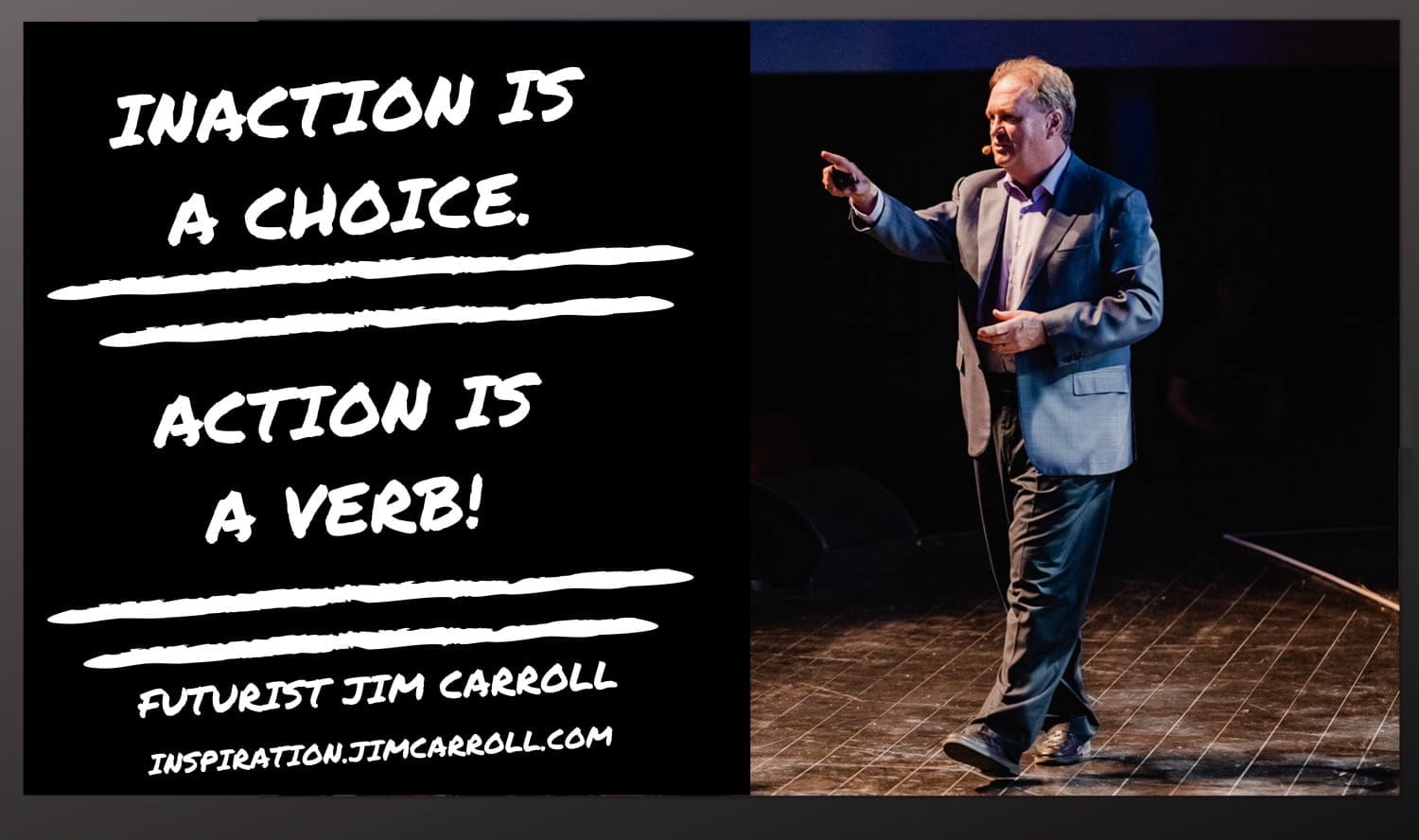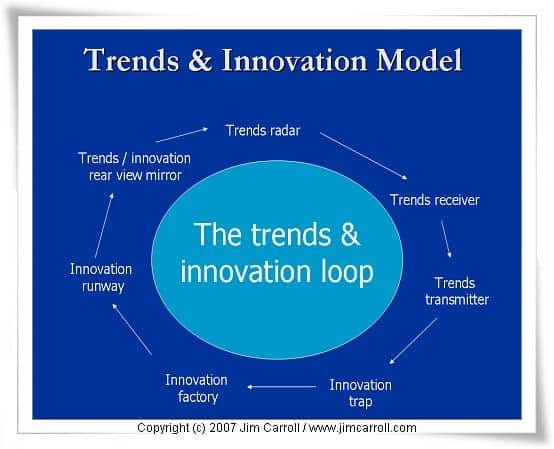"Inaction is a choice. Action is a verb!" - Futurist Jim Carroll

The future abhors inaction.
Yet most organizations become trapped within it, driven a leadership team that is frozen in place, unable or unwilling to move forward. The results are predictable.
Most often, it comes through denial.
"There is no reason for any individual to have a computer in his home." Ken Olsen, CEO, DEC, 1977
Digital Equipment froze in place when the personal computer (PC) came along, famously refusing to get involved. The result was predictable as they eventually were bought out for a fraction of their value by a PC company, Compaq. That company then disappeared because it too froze in place, refusing the accept the direct-to-consumer business model pioneered by Dell Computer! (Incidentally, one of the biggest bookings in my still-forming career as a speaker occurred in 1993 when DEC booked me on a 7-city 'roadshow' to highlight the growing importance of the Internet. At least they got that trend right!)
What are the other causes of inaction? Uncertainty, arrogance, hubris, complacency, resistance to change, inadequate resources - the sins of leadership failure are vast. And as is often the case, denial of the speed with which a dramatic, transformative change to future circumstances is often the root cause. And as I will often comment on stage and in my posts, there are many people who just don't like the future and what it represents - but will end up there anyways!
There is a high cost to business inaction - missed opportunities, a reduced ability to respond to emerging competitive threats, loss of market share, and an acceleration of new risk. Worst case, it leads to bankruptcy or acquisition. Adaptec was a well-known data storage company but didn't keep up with the trends redefining the industry (the forthcoming dominance of cloud technology), and went from $2 billion in sales to $35 million in a matter of years. Oops.
How do you counter this? Accept the future, align with it, understand the trends - be proactive! Be proactively strategic by aligning to changing customer needs, market trends, and competitive threats. Spend the time to understand what's next and what to do about it. Put in place an effective trends radar - a model for aligning to the future that I've been sharing with clients since 2007 and before.

And focus on your speed, agility, and flexibility!
The key thing is, so many organizations learned how to be action-oriented during the early days of Covid, and it's important not to lose the unique forward-oriented culture which emerge. Think about it: speed and action were everywhere. We implemented e-commerce platforms at speed and built sophisticated delivery and supply chain systems. Manufacturing companies quickly realigned their process to manufacture masks and shields. Churches learned how to do virtual services. Think about what we witnessed - the verb 'action' was dominant!
- 10 years of change in 6 months
- Major trends accelerated
- Organizations learned something new about speed
- Agility and flexibility became a necessity
- Business models shifted faster
- An attitude that it can't be done was shattered by necessity
- Decision-making paralysis was obliterated
- The slow structure common to organizations was put under a microscope
- Old barriers to new ideas disappeared
- "Get it done" became the rallying cry
The key issue for everyone now is - how do we sustain the momentum? That's what I've been emphasizing to my clients - keep moving, and capitalize on the lessons learned.
The bottom line is this. "Inaction is a choice" implies that when faced with a challenge or opportunity, a leadership team is consciously deciding not to pursue it. That's negligence! That is a decision that means sticking with the status quo. What mystifies me is when they do this, and yet know it will have consequences. They know that their inaction will cost them a loss in customers, market share, revenue, reputation, talent, innovation, and competitive advantage. I've never understood why.
"Action is a verb" implies an organization that is fully prepared to challenge the status quote, and move forward at speed to invent a new reality. It is driven by a leadership team that is defined by courage, vision, strategy, innovation, collaboration, communication, feedback, learning, quality, and reliability. It's not easy, but necessary in the face of transformative, disruptive trends.
Today, at this very moment, you are probably faced with a decision that needs to be made.
Your choice is inaction or action.
Get moving!
Jim Carroll focuses on action each and every day. Moving forward is better than looking back!
Thank you for reading Jim Carroll's Daily Inspiration. This post is public so feel free to share it.

